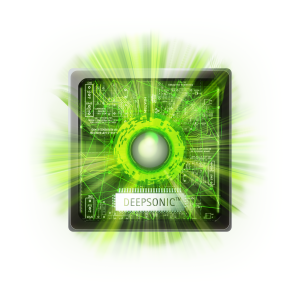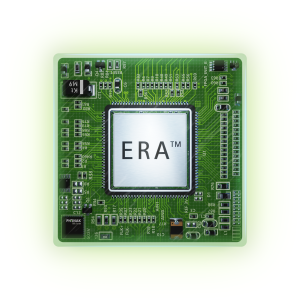Artificial Intelligence (AI), machine learning, and Deep Neural Network (DNN)
Artificial Intelligence (AI) is the umbrella term for human-like intelligence services provided by machines. Machine learning (ML) is a field of artificial intelligence for the use and development of computer systems that can learn and adapt without following explicit instructions, by using algorithms and statistical models to analyse and draw inferences from patterns in data. Deep Neural Network (DNN) is a model type in machine learning that allows very precise modeling of very complex data with numerous inputs and outputs with complex relationships (deep learning).
An artificial neural network includes many more parameters (millions or billions) than other models and can easily process vast volumes of data. DNNs can learn and isolate signals of interest and deliver exceptional accuracy in real-time (e.g. ChatGPT).

De-noising – beamforming
Most modern hearing aids use spatial selectivity techniques such as beamforming to reduce noise, which has been shown to improve speech intelligibility and reduce listening effort. 1,2 Beamformers combine the signals from the microphones in the hearing aids to select the direction or directions of interest, inherently assuming that the audio source of interest and the distracting noise can be separated by direction. Beamforming is considered state of the art in de-noising technology. It has shown significant results in accurately detecting the direction of the dominant speaker, resulting in an average of 11% reduced listening effort and 15% better speech understanding in noise when it’s coming from the side or behind.1
In social situations with multiple speakers, such as having a conversation with a group of friends in a restaurant or attending a business meeting, beamformers as a stand-alone solution may be of limited benefit to the individual. The reason is that beamformers assume that speech is coming from the frontal hemisphere, and current technology is limited in its ability to reduce noise in a complex, challenging environment where conversation can be dynamic, coming from multiple directions, and the background noise is complex.
Beamforming and a dedicated AI chip (DNN)
The Phonak Audéo Sphere™ Infinio continues to leverage Beamforming technology combined with an onboard deep neural network (DNN). The DNN is enabled by a dedicated AI chip that permits 53x more processing power. Trained on 22 million sound samples and powered to enable 4.5 million neural connections, the Phonak Audéo Sphere™ Infinio expands the listening range in all directions and separates speech from unwanted noise. Suitable for individuals with mild to profound hearing loss, the Phonak Audéo Sphere™ Infinio delivers a level of speech clarity far beyond any existing technology.3 This is a next level hearing experience!

Artificial intelligence – savior or threat?
AI is a hot topic in all aspects of our lives. This is also true for hearing health care. While it can open a whole new world of technological possibilities, AI in hearing aids may arouse questions and uncertainties, including aspects like data protection. Following strict laws and internal regulations, Phonak has put a strong focus on data security during the development of the AI platform for Phonak Infinio. While trained on millions of hearing situations in the lab, the hearing aids were introduced in the market as a “closed” system.
This ensures that they cannot be hacked, and no personal data of the hearing aid user is tracked. In this way, we make sure that patients can fully benefit from the technological opportunities of AI while providing them with peace of mind regarding their privacy.
1Latzel, M., Lesimple, C., & Woodward, J. (2022). New implementation of directional beamforming configurations show improved speech understanding and reduced listening effort. Phonak Field Study News. https://www.phonak.com/evidence 2 Adler, M. & Seitz-Paquette, K. (2023). Advancements in beamformer technology demonstrate an advantage of a steered beamformer vs. static for off-axis speech in noisy environments, Phonak Field Study News 3 Raufer, S., Kohlhauer, P., Jehle, F., Kühnel, V., Preuss, M., Hobi, S. (2024). Spheric Speech Clarity proven to outperform three key competitors for clear speech in noise. Phonak Field Study News. Retrieved from www.phonak.com/evidence